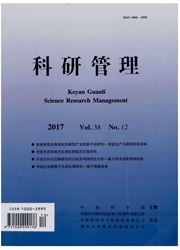

 中文摘要:
中文摘要:
在标准化技术的许可中,标准制定组织(SSO)近年来尝试采用事前许可,以克服专利劫持和规范技术许可。然而,至今其运作并不理想,许可机制尚待改进。在同质投资的观点下,本文通过一个序贯投资模型刻画了事前许可下许可双方的收益和投资激励,并导致了双边劫持的结果。为了优化许可程序,进一步考察了事前许可的执行对研发和生产的影响;并确定了有效率投资下事前许可的适用范围。研究得出以下结论:(1)事前许可下联合预期盈余提高,对厂商的劫持被克服;(2)短期实施提高厂商投资和技术价值,事前许可可行;长期实施导致研发阻滞,事前许可可行性较差。最后,提出进一步的政策建议。
 英文摘要:
英文摘要:
In the context of the licensing of standardized technology, Standard -Setting Organization (SSO) has tried to adopt ex ante licensing in recent years in order to prevent patents from hold up and conform to technology licensing. However, up to now, it seems not working properly, and the mechanism for licensing needs to be modified indeed. A model of sequential investment is applied to in a sense of homogeneous investment, firstly the profit and investment incentive of the two licensing parties are charac- terized, and then double hold - up which is lack of efficiency for the licensing in some case is resulted in. To optimize the licen- sing procedure, the effect of the enforcement of ex ante licensing on both development and manufacture is investigated, and the applicability of ex ante licensing under the emcient investment is confirmed. Result indicates that ( 1 ) the joint expected surplus increases in the ex ante licensing, and the manufacturer's hold- up is solved (2) the short-term enforcement enhances the manufacturer's investment and the value of technology, ex ante licensing is feasible; the long- term enforcement causes R&D deterrence, ex ante licensing is less feasible. Finally, further alone policy suggestion is provided.
 同期刊论文项目
同期刊论文项目
 同项目期刊论文
同项目期刊论文
 期刊信息
期刊信息
